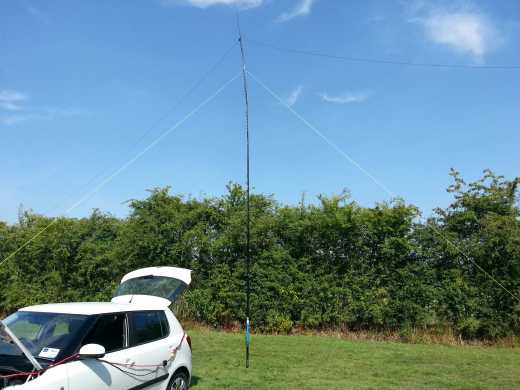Home » Posts tagged 'rsgb'
Tag Archives: rsgb
OFCOM, HAREC and all that…
This post contains some bad news – not just for me but for anyone in the UK who has been studying for a license via the US Exam route.
I’ve held a US Amateur Extra license for about 2 years now and have been issued licenses by the Bahamas and Malta for use there on the strength of that license. Since the modification of the UK Reciprocal License privileges earlier this year, I felt it was worthwhile applying for a UK Full Reciprocal License since I would be able to use it while /MM and also when visiting other CEPT countries.
I had already prepared the path for this in the past with OFCOM and the RSGB neither of whom saw any difficulty in the application barring that the Federal Communications Commission in the USA does not issue HAREC certificates. (A HAREC is a certificate indicating that their examinations meet the harmonised standards in CEPT). I was encouraged by OFCOM to explain this in my application and I did so – I also included the initial correspondence with them.
This afternoon, I received the following email from OFCOM:
Dear Mr Macrae
Thank you for your e-mail.
As you do not have access to a HAREC you are required to provide proof of US citizenship (generally in the form of a Passport)
Please provide this detail included in an e-mail to us then we can proceed with the application.
I have written back to explain that I am not a US Citizen but a British Subject. However, the implications of this demand are serious for those who planned to take the US examinations this year at the various Hamfests. It is clear that if you are not a US citizen then the door is firmly closed.
Of course, it does make a mockery of the recognition of competence of US licensed amateurs. Apparently you are only competent to operate an Amateur Station if you hold a US passport so all of the people that legally hold a US license but are not citizens are somehow less competent.
Words fail me!
Needless to say, I shall be in touch with the RSGB in the morning to let them know what OFCOM’s stance is.
Antennas
I like making stuff work. From the outset, I was determined that I would be making my own antennas (aerials). The question was – what to make. The more I delved into the subject, the more confusing it became!
It seemed that the ideal solution was to have a beam for every occasion as well as some long wires for listening at least. However, I also had to get this lot in a suitcase – in fact, a lot less than a suitcase – a backpack would be the only practical size since I rarely stay in one place very long.
So I settled for a 9m fishing pole for 17 Euros as the basis for my antennas. I quickly made up a dipole for 40m but decided to feed it with 450 Ohm ladder line in the hope that I would prevent the majority of transmission losses as I attempted to use it on other bands. As it happens, it works quite well. Certainly not as well as a single band anything but it got me by for the first few weeks I was in Gozo.  I nicknamed it ‘Clinton’ for obvious reasons (look at the photo) and it became the mainstay for all the /P that I did in the summer of 2013. It works well on 40m and from the UK, I have worked as far as ZD7 and a few other reasonable DX stations on it. Using the AT 200 Pro, it tunes and works well on 40 – 10m with the exception of 12m. Its a reasonable all rounder for my purposes.
I nicknamed it ‘Clinton’ for obvious reasons (look at the photo) and it became the mainstay for all the /P that I did in the summer of 2013. It works well on 40m and from the UK, I have worked as far as ZD7 and a few other reasonable DX stations on it. Using the AT 200 Pro, it tunes and works well on 40 – 10m with the exception of 12m. Its a reasonable all rounder for my purposes.
My next antenna came courtesy of the RSGB ‘Beginners’ newsletter. In June, they sent round the plan for a simple 10m antenna made out of coax! So I made one up out of bits of 75 Ohm that the TV guy had left me. I tuned it up on the swr meter on the radio and it worked great. and so 10m was properly opened up to me. Side by Side tests against the inverted V showed that it was 1-2 S units better on both transmit and receive. Result!
 I really like this antenna. It coils up and goes in my pocket for a start! Its pretty robust, simple and cheap – Ideal for single band /P. I really discovered the rich seam of DX that there is on 10m – so much so, that generally I turn on the radio and if there’s any activity, I will work it, switching to the other bands only if there’s nothing else to do.
I really like this antenna. It coils up and goes in my pocket for a start! Its pretty robust, simple and cheap – Ideal for single band /P. I really discovered the rich seam of DX that there is on 10m – so much so, that generally I turn on the radio and if there’s any activity, I will work it, switching to the other bands only if there’s nothing else to do.
I have also scaled this design to other bands with reasonable success although I have not been able to do any side-by-side testing yet.
